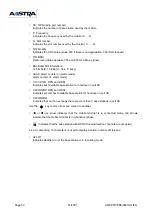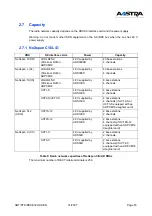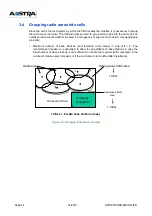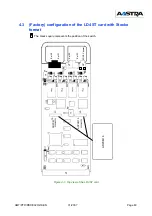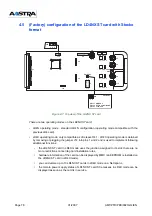
AMT/PTD/PBX/0020/2/4/EN
01/2007
Page 63
Example:
Figure 3-1 : Example of deployment
1
The deployment study produced the following information:
•
total number of radio areas in the company = 7 (from Z1 to Z7)
•
total number of mobiles in the company = 90
2
The following information was supplied by the customer:
User mobility: medium
Distribution of mobiles in company:
•
10 mobiles in radio areas Z1 and Z4, "low" traffic
•
20 mobiles in radio areas Z2 and Z5, "medium" traffic
•
60 mobiles in radio areas Z3, Z6 and Z7, very "high" traffic
3
The final picture will be:
•
Homogenous area 1 = Z1 + Z4, "low" traffic area
N/Z = 10/2 = 5, i.e. 1 base station per radio area
•
Homogenous area 2 = Z2 + Z5, "medium" traffic area
N/Z = 20/2 = 10, i.e. 2 base stations per radio area
•
Homogenous area 3 = Z3 + Z6 + Z7, very "high" traffic area
N/Z = 60/3 = 20, i.e. 3 base stations per radio area
Homogenous area 1 has one cell (cell 0), homogenous area 2 one cell (cell 1), homogenous
area 3 three cells (cells 2, 3 and 4), i.e. one cell per radio area to handle the traffic.
10 mobiles
20 mobiles
60 mobiles
Z1
+
Z2
++
Z3
+++
Z4
+
Z5
++
Z7
+++
radio area
Z6
+++
cell 0
cell 1
cell 2
cell 3
cell 4
DECT base station
Homogenous area 1
"Low" traffic
Homogenous area 3
Very "high" traffic
Homogeneous
area 2
"Medium" traffic
Summary of Contents for NeXspan C
Page 2: ...Page 2 01 2007 AMT PTD PBX 0020 2 4 EN...
Page 20: ...Page 20 01 2007 AMT PTD PBX 0020 2 4 EN...
Page 66: ...Page 66 01 2007 AMT PTD PBX 0020 2 4 EN...
Page 70: ...Page 70 01 2007 AMT PTD PBX 0020 2 4 EN Figure 4 2 Bottom view of the LD4 ST card...
Page 134: ...Page 134 01 2007 AMT PTD PBX 0020 2 4 EN...


